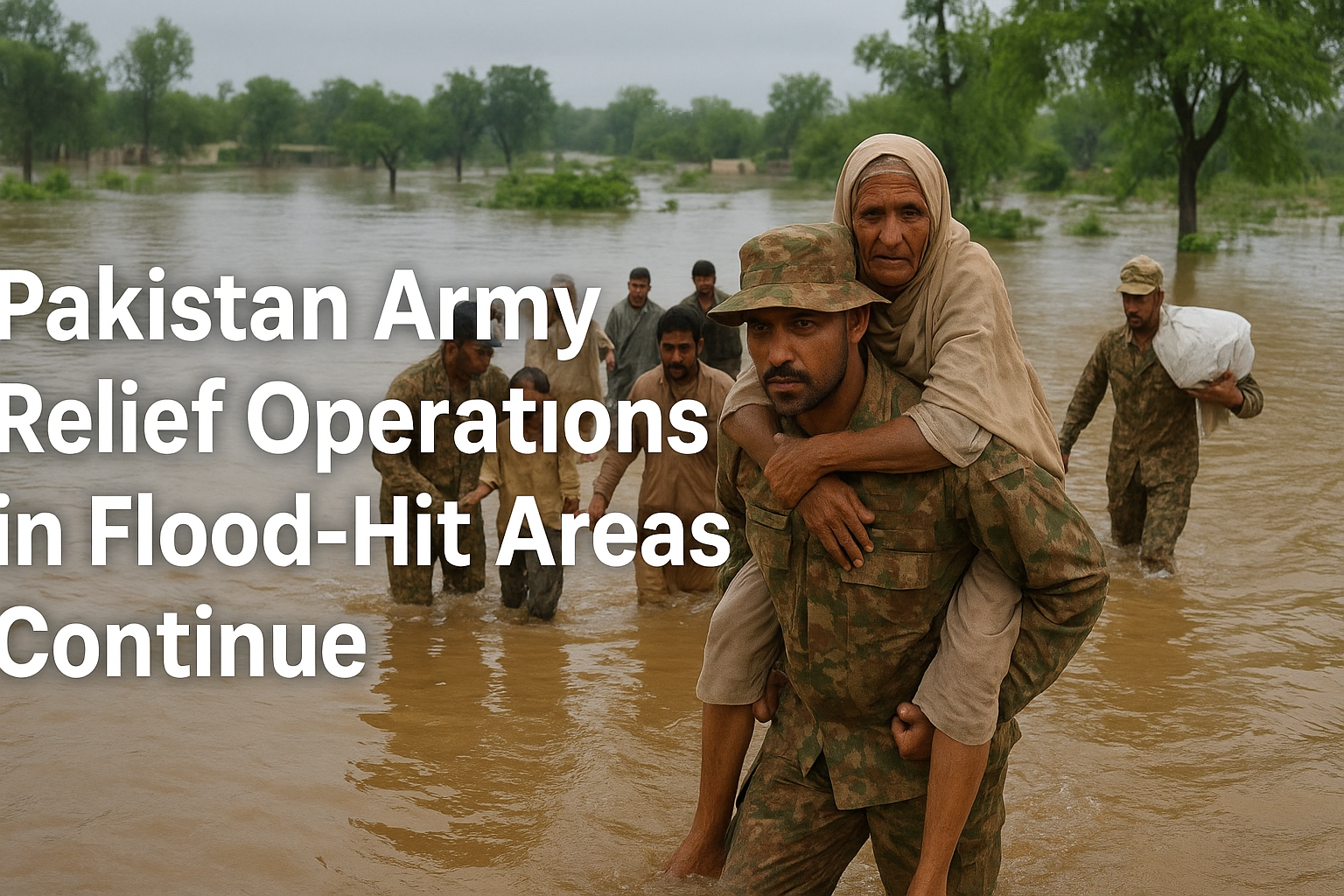
The National Emergency Operation Centre (NEOC) has declared an extraordinary flood situation in Punjab as the Chenab, Ravi, and Sutlej rivers continue to rise dangerously. The alarming surge in water levels has put thousands of people at risk, forcing the government to deploy the army and rescue teams to prevent large-scale disasters.
According to official data, the Chenab River at Marala Headworks recorded more than 769,000 cusecs of water, while Khanki reported over 705,000 cusecs. These flows are far above normal capacity, placing surrounding districts under severe threat. The Ravi River at Jassar reached over 202,000 cusecs, with projections of further increases. Similarly, the Sutlej River at Ganda Singh Wala has swelled to over 245,000 cusecs, a level classified as exceptionally high.
The NEOC has placed its operations on 24/7 monitoring, working in close coordination with the Punjab government, Rescue 1122, Rangers, and the Pakistan Army. Troops have been deployed in vulnerable districts including Lahore, Kasur, Sialkot, Faisalabad, Narowal, Okara, and Sargodha. Their primary focus is to assist in evacuations, reinforce embankments, and provide relief supplies to displaced families.
Authorities have issued repeated evacuation orders for residents of low-lying and riverine areas. People are being urged to prepare emergency kits, safeguard important documents, and move to designated shelters. Travel to affected areas has been strongly discouraged as floodwaters continue to rise. The NEOC has also advised citizens to stay updated through the NDMA Disaster Alert application.
Prime Minister Shehbaz Sharif has chaired emergency meetings to review the flood crisis. He directed provincial and federal agencies to speed up evacuations, ensure timely warnings, and distribute relief packages including food, tents, and medicines. Reports confirm that more than 174,000 people have already been relocated to safer areas.
The extraordinary flood situation is linked to heavy monsoon rains coupled with the release of water from Indian dams. Experts fear the next 48 hours will be critical for Punjab, as river inflows are expected to rise further. With memories of Pakistan’s devastating 2022 floods still fresh, officials warn that climate change is intensifying extreme weather events, making early preparedness crucial.
The National Disaster Management Authority (NDMA) continues to monitor the flood situation closely. Emergency control rooms have been activated, and response teams remain on standby. Authorities have urged citizens not to panic but to follow instructions from local administrations for their safety.
The unfolding extraordinary flood situation highlights the urgent need for stronger disaster management systems, resilient infrastructure, and long-term climate adaptation strategies. For now, the combined efforts of the government, military, and local communities are focused on protecting lives and minimizing damage from the swelling rivers of Punjab.






